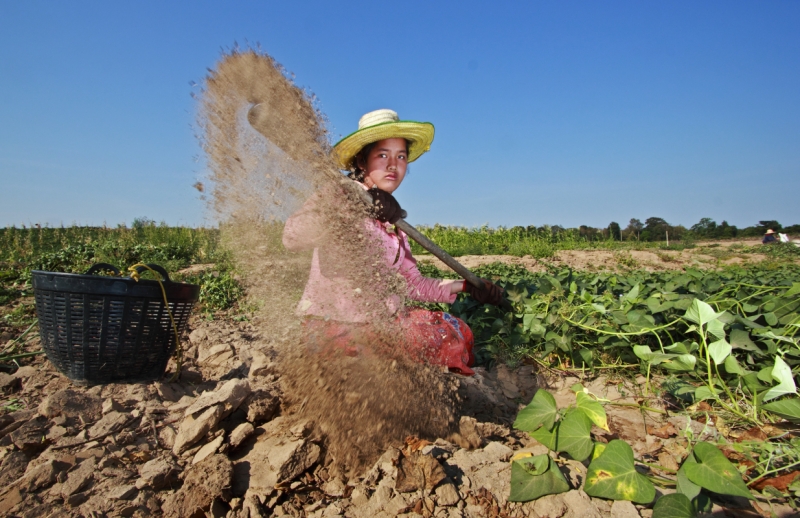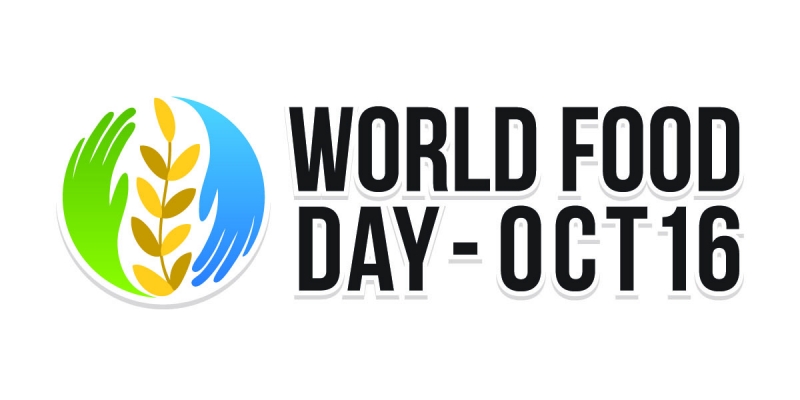




According to American psychologist Abraham Maslow (1943), the needs of human beings can be arranged in a hierarchy. Before progressing on to meet higher level needs, one must first satisfy lower level basic needs. These basic needs include shelter, clothing, water, and food. He called this theory the “Hierarchy of Needs.”
Put simply, this means that humans must first be able to eat, drink, and go to sleep before they go higher up the ladder, such as attain education, get a job, fall in love, or even solve the world’s problems.
Hence, it is only reasonable that the world allots a day to celebrate the single most important thing in anyone’s lives. Forget about the internet, forget about technology, forget about world peace, and let’s go back to the most important need of human beings since the dawn of time – food.
World Food Day and the Battle against Hunger
With this year’s theme, ‘Social Protection and Agriculture: Breaking the Cycle of Rural Poverty’, the World Food Day is a day of commemorating the importance of food and acting against hunger. Last October 16, people around the world once again came together to declare their commitment to fight hunger.
The World Food Day began as a celebration of the Food and Agriculture Organization of the United Nations’ (FAO) founding anniversary on October 16, 1945 in Quebec, Canada. First established in 1979, World Food Day has since been observed in almost every country by millions of people. This year marks the 35th observation of the World Food Day, as well as FAO’s 70th anniversary.
In various parts of the world, grassroots events and public awareness campaigns engage diverse audiences in action against hunger. From hunger walks and World Food Day dinners to meal packaging events and food drives, many initiatives have been led by various organizations and individuals to address this single, most pressing world problem.
Joining the hundreds of nations who celebrated this very special event are the Lower Mekong Region (LMR) countries of Cambodia, Laos, Myanmar, and Vietnam – each of which has fought its best to mitigate, if not completely eradicate, hunger in their respective areas. Let’s take a peek at how they fared so far.
Cambodia
Cambodia has achieved an impressive economic development in the past decades, which had significantly contributed to a steep decline in poverty and hunger from 47 % in 2007 to well below 20 % today.
Nonetheless, a large proportion of Cambodian population still lives just above the poverty line and remains highly vulnerable to shocks, such as climate change, natural disasters, protracted illness and rising food prices.
Lao PDR
Like Cambodia, Lao PDR has made significant progress in reducing hunger, with the proportion of undernourished people in the country falling from 49 % in the early 1990s, down to 18.5 % today.
However, there is still much to achieve in Laos. Approximately 1.3 million of the country's 7.1 million population remains undernourished. Along with many other countries in the region, Lao PDR continues to strive to reduce undernutrition, which manifests in high rates of stunted growth in children below five years old.
Myanmar
Myanmar levels with its LMR country counterparts in terms of reducing hunger and malnutrition in recent years. In 1990, 62 % of the population was undernourished, compared to just 14 % today, which means that Myanmar achieved the Millennium Development Goal (MDG) of halving hunger by 2015.
But despite this achievement, there is still much work to be done. More than 26 % of the population, or 13 million people, still live below the poverty line, and close to three million people are considered food poor, spending a high percentage of their limited income on food.
Viet Nam
Viet Nam made the fastest progress among all CLMV countries in terms of mitigating hunger and poverty in the recent decades, and has achieved a number of MDGs ahead of schedule. Between 2009 and 2014, more than 1 million people escaped hunger and the country's poverty rate fell to 6 percent.
Viet Nam is just one of the 19 Asia-Pacific countries that have managed to reduce the proportion of people suffering from hunger by half since 1990, along with Cambodia, Laos, and Myanmar.
However, ensuring these achievements are obtained for all social groups, especially vulnerable groups, remains a major challenge.
World Food Day and the Promise of Feeding the Future

Food is the most basic of human rights – the least thing any human being should be provided with. However, the sad truth remains that hunger not only exists, but is prevalent in many parts of the world. What’s ironic is that the world actually produces enough food to feed every person on the planet.
But the future appears bright and promising. Looking at the current trends and statistics, there is no doubt that all LMR countries had already achieved the MDG goal of halving hunger by 2015. With continued and more strengthened efforts of the government and other sectors, these developing countries can soon achieve the World Food Day’s objective – which is no less than zero hunger.
That is because “when it comes to hunger, the only acceptable number in the world is zero.”